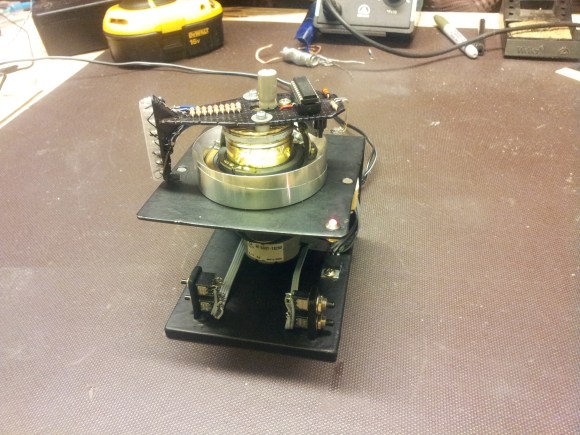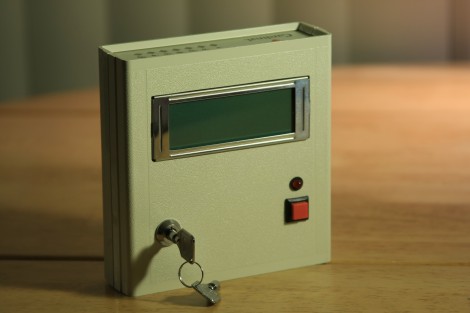
This little device lets you play some head-to-head pong using a spinning LED display. We’re really in love with the design. You get a pretty good idea of the Persistence of Vision aspect of the build by looking at this picture. But hearing [Dennis] explain the entire design in the video after the break has us really loving its features.
He’s using the head from a VCR as the spinning motor. The display itself uses a vertical row of LEDs with a bit of wax paper as a diffuser. These are current limited by a 1k resistor for each of the eight pixels. They’re driven by a PIC 16F690 but you may have already noticed that there’s no battery on the spinning part of the board. It gets voltage and ground from a pair of brushes which he fabricated himself. To avoid having to do the same thing to map the control buttons in the base to the spinning board he came up with something special. There’s a downward facing phototransisor which registers LED signals from the base to move the paddles up or down.
If you love this project check out the POV Death Star.
Continue reading “POV Pong Game Uses All Kinds Of Smart Design”












